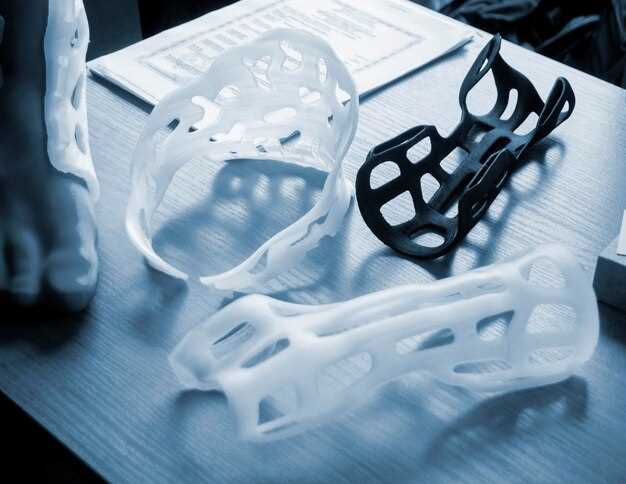
The advent of lightweight materials, particularly carbon composites, has revolutionized the landscape of modern design. As industries strive for greater efficiency and sustainability, the integration of lightweight materials into various applications has become a defining characteristic of contemporary engineering and architectural practices. This shift is not merely about reducing weight; it encapsulates a broader commitment to innovation, performance, and aesthetic appeal.
Carbon fibers and composites are at the forefront of this transformation, offering unparalleled strength-to-weight ratios that challenge traditional design paradigms. Designers are now able to explore forms and structures that were previously considered unfeasible. This has led to the creation of products that not only perform better but also embody a more futuristic and minimalist aesthetic. The allure of lightweight materials extends beyond functionality; they are reshaping consumer expectations and inspiring a new wave of creativity across various fields.
As we delve deeper into the impact of lightweight materials, it becomes evident that their influence is pervasive, affecting everything from automotive design to architectural structures. The pursuit of sustainability and efficiency aligns seamlessly with the properties of carbon materials, prompting designers to rethink traditional approaches and embrace innovation. This article will explore the various ways in which lightweight materials are shaping modern design trends, highlighting their significance in our evolving technological landscape.
Benefits of Carbon Fiber in Product Development
Carbon fiber is renowned for its lightweight properties, making it an ideal material for various applications in product development. Its high strength-to-weight ratio allows designers to create robust products without adding unnecessary mass, which is essential in industries such as aerospace, automotive, and sporting goods.
Another significant advantage of carbon fiber is its exceptional stiffness. This rigidity enables products to maintain their shape under stress, ensuring longevity and reliability. As a result, engineers can push the boundaries of design while still meeting performance requirements.
Furthermore, carbon fiber displays excellent fatigue resistance. Unlike metals that may deform over time, carbon fiber retains its structural integrity, leading to a longer lifespan for manufactured items. This durability reduces costs associated with maintenance and replacement, providing better value in the long run.
Carbon fiber is also highly versatile, allowing it to be molded into complex shapes with precision. This flexibility enhances creativity in product design, enabling innovative forms that were previously challenging to achieve with traditional materials.
Additionally, carbon fiber offers resistance to environmental factors such as corrosion and UV radiation. This characteristic extends the functional life of products, particularly in outdoor and harsh conditions, making it a preferred choice for many developers looking to ensure durability.
Finally, the aesthetic appeal of carbon fiber, characterized by its unique texture and appearance, adds a modern touch to designs. This visual quality attracts consumers and contributes to the overall desirability of the product.
Design Innovations Driven by Lightweight Materials

The integration of lightweight materials into modern design has led to significant innovations, particularly in industries such as automotive, aerospace, and consumer electronics. Among these materials, carbon fiber stands out due to its exceptional strength-to-weight ratio, enabling designers to create products that are not only lighter but also more durable.
In the automotive sector, the use of carbon fiber has revolutionized vehicle design. Manufacturers are now able to reduce overall weight, resulting in improved fuel efficiency and enhanced performance. For instance, many high-performance sports cars utilize carbon fiber components to achieve optimal aerodynamic profiles while maintaining structural integrity. This shift not only improves speed but also allows for more agile handling.
In aerospace, lightweight materials are critical for achieving greater fuel efficiency and extending the range of aircraft. The introduction of carbon fiber reinforced polymers has led to the development of lighter wings and fuselages, significantly decreasing the overall weight of aircraft. This reduction translates into substantial cost savings on fuel and increases operational efficiency, making air travel more sustainable.
The consumer electronics industry has similarly benefited from advancements in lightweight materials. Devices like smartphones, laptops, and tablets are increasingly being designed with carbon fiber casings, enhancing portability. This trend has prompted manufacturers to focus on creating sleek, modern aesthetics while ensuring that devices remain lightweight yet robust enough to withstand daily use.
Furthermore, lightweight materials have sparked innovative approaches to product design, enabling the creation of intricate shapes and forms that were once impractical. The flexibility of carbon fiber allows designers to experiment with complex geometries, leading to aesthetically pleasing and functional products. This has fostered a new wave of creativity, as seen in modern furniture, sporting goods, and fashion design.
Overall, the adoption of lightweight materials, particularly carbon fiber and advanced composites, is driving a paradigm shift in design innovation across various sectors. As technology continues to evolve, the potential for new applications and enhancements in design will only expand, paving the way for a future where lightweight materials play a central role in shaping the products and experiences of tomorrow.
Challenges of Integrating Lightweight Materials in Manufacturing

The integration of lightweight materials, particularly carbon fiber, into manufacturing processes presents several challenges that must be addressed to maximize their potential. These challenges can be categorized into several key areas:
-
Material Cost:
Carbon fiber is significantly more expensive than traditional materials like aluminum or steel. The high cost of raw materials limits its widespread adoption, especially for cost-sensitive industries.
-
Manufacturing Techniques:
The production of components from lightweight materials often requires specialized manufacturing techniques, such as autoclave curing or resin transfer molding. These methods can be complex and require specific equipment, increasing the overall production time and cost.
-
Design Limitations:
Designing components to fit the unique properties of carbon fiber can be challenging. Engineers must consider factors such as stiffness and tensile strength, making it necessary to rethink conventional design approaches.
-
Joining Methods:
Joining carbon fiber structures to other materials presents difficulties. Standard welding techniques cannot be applied, and alternative methods such as adhesives or mechanical fasteners must be employed, which can complicate the assembly process.
-
Recyclability:
The recyclability of carbon fiber composites remains a concern. Unlike metals, which can be readily recycled, end-of-life carbon fiber products are often difficult to process, leading to environmental implications and increased waste management costs.
-
Performance Variability:
Consistent performance in carbon fiber components can be unpredictable due to variations in the manufacturing process. Factors such as fiber alignment and resin infusion techniques can directly impact the final product’s properties.
Addressing these challenges is essential for manufacturers looking to innovate with lightweight materials. Collaboration across industries, investment in research, and advancements in technology will play critical roles in overcoming these barriers.



